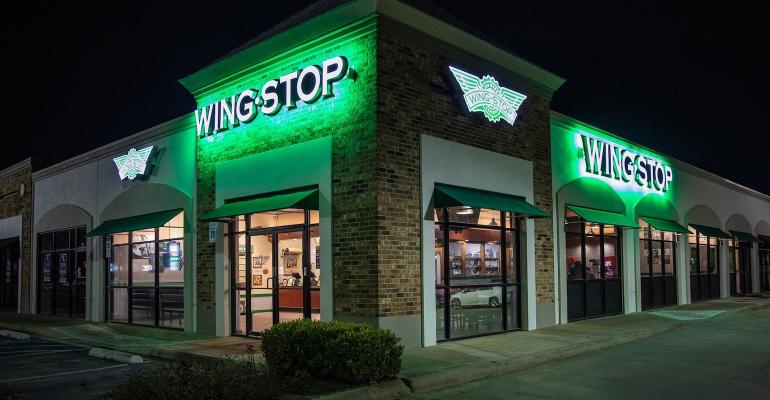Wingstop Inc. is targeting average unit volumes of $2 million or more and working to iron out volatility in its costs of goods with boneless menu items like chicken sandwiches and tenders, executives said Wednesday.
The Dallas-based fast-casual company, which released earnings for its second quarter ended July 1, said current AUVs are about $1.7 million, up from $1.5 million about a year ago.
Besides increasing transactions, Wingstop has worked on its supply chain and buys less product on the spot market, said Michael Skipworth, Wingstop’s president and CEO, on a second-quarter call with analysts.
“This is a fundamental shift in our model,” Skipworth said. “And it's helping us mitigate the volatility we have historically seen in food costs as we continue to win more chicken sandwich occasions. We see a path to 50%-plus boneless mix, which we believe could result in a structural change to our long-term food cost target potentially yielding [costs of goods] in the low 30% range and further enhancing our best-in-class unit economics.”
Skipworth added that existing franchisees see good returns on their investments and seek to expand their portfolios.
“These multi-year sales drivers that we are executing against have combined to drive significant transaction growth and gives us confidence in achieving our targeted AUV in excess of $2 million. Our supply-chain strategy and growth in AUV have strengthened unit economics,” Skipworth said. “The average investment to open a Wingstop is still a relatively modest $450,000 and, with system AUV's of $1.7 million, brand partners are seeing a payback in less than two years.”
Digital sales in the quarter reached 65.2% of total sales, the company said, and some of that has been helped by third-party delivery platforms.
“In July of last year,” Skipworth said, “we launched a second delivery provider for the entire domestic system. The addition of Uber Eats [to the existing DoorDash platform] has allowed us to access a new guest that's proven to be highly incremental.
“We see the two delivery marketplaces as another avenue to build awareness,” he said. “Benchmarks suggest the delivery sales mix can be north of 50%. Today we sit at approximately 30% delivery mix in the system.”
For the second quarter ended July 1, Wingstop’s net income was $16.2 million, or 54 cents a share, compared to $13.3 million, or 44 cents a share, in the same period a year ago. Revenue was $107.2 million, compared to $83.8 million in the prior-year quarter.
U.S. same-store sales were up 16.8% in the quarter, mostly with transaction growth, the company said.
Wingstop, founded in 1994, has 2,046 restaurants systemwide with 1,794 domestic. The company owns 45 units. The brand has 252 locations abroad.
“During the first half,” Skipworth noted, “we saw an acceleration in international same=store sales growth. And the investments we have been making in the team are paying off. We signed two new markets during the quarter — [the] Netherlands and Puerto Rico — which fit perfectly within the regional expansion strategy we have discussed over the years.” The brand is also growing its footprint in the new markets of China and Korea, he said.
In the five-year-old market of the United Kingdom just last week, Skipworth noted, the restaurant in London’s SoHo, on Cambridge Circus, posted a record of more than $100,000 in in sales for the period.
Alex Kaleida, Wingstop’s chief financial officer, raised the company’s development guidance, saying it expected 240 to 250 new restaurants in the year.
Contact Ron Ruggless at [email protected]
Follow him on X: @RonRuggless

